Affiliate disclosure: This post may contain affiliate links. Please see our Privacy Policy.
Herbal tincture recipes allow you to take charge of your own herbal health at home. Make your own potent, shelf-stable herbal tinctures with fresh or dried plant material and high-proof alcohol using the recipes in this all-encompassing roundup of powerful herbal remedies.
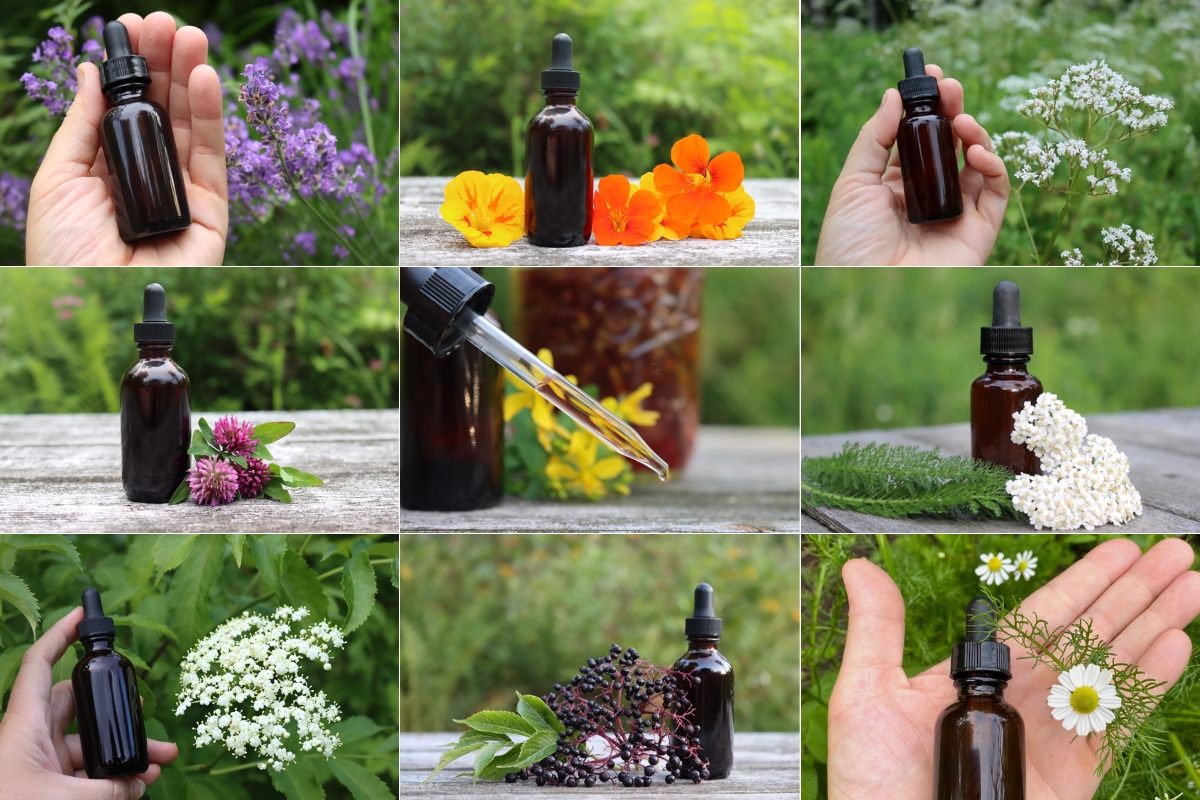
Table of Contents
- How to Make a Herbal Tincture
- Herbal Tincture Recipes
- Astragalus Tincture
- Bee Balm Tincture
- Black Walnut Tincture
- Burdock Tincture
- Chamomile Tincture
- Chickweed Tincture
- Dandelion Tincture
- Echinacea Tincture
- Elderberry Tincture
- Elderflower Tincture
- Feverfew Tincture
- Ginger Tincture
- Holy Basil Tincture
- Lavender Tincture
- Nasturtium Tincture
- Oregano Tincture
- Peppermint Tincture
- Red Clover Tincture
- St. Johns Wort Tincture
- Stinging Nettle Tincture
- Valerian Root Tincture
- Yarrow Tincture
- Herbal Medicine-Making Tutorials
- Herbal Guides
Making tinctures at home using fresh or dried plant material, either the flowers, leaves, stems, or roots—or sometimes a combination of all four, is an incredibly easy and rewarding process that comes together in fewer than 10 minutes.
Once assembled, you’ll need to wait 6 to 8 weeks before the tincture is ready to be used, but during this time your only obligation will be to give the steeping herb and alcohol mixture a gentle shake every day or couple of days.
When the tincture is ready, you’ll have a potent form of plant medicine that can be used for all manner of ailments. Whether you need a tincture for cold and flu season, hormone imbalances, wound healing, stomach issues, or sleep, you’ll find a recipe below (if not more than one!) that caters to the needs of yourself and your family.

How to Make a Herbal Tincture
An herbal tincture is made by extracting the active medicinal compounds from plant matter using alcohol as a solvent. Another common type of herbal extract is called a herbal glycerite, which uses vegetable glycerine in place of alcohol to extract the plant compounds.
Tinctures can be made with fresh or dried plant matter and there are advantages to both mediums. Fresh herbs are very potent but should be used as soon as possible after they’ve been picked—the longer you wait the more prone they are to spoilage. For dried herbs, either dry them yourself or buy them from a reputable source with good turnover (I’m a big fan of Mountain Rose Herbs and Starwest Botanicals).
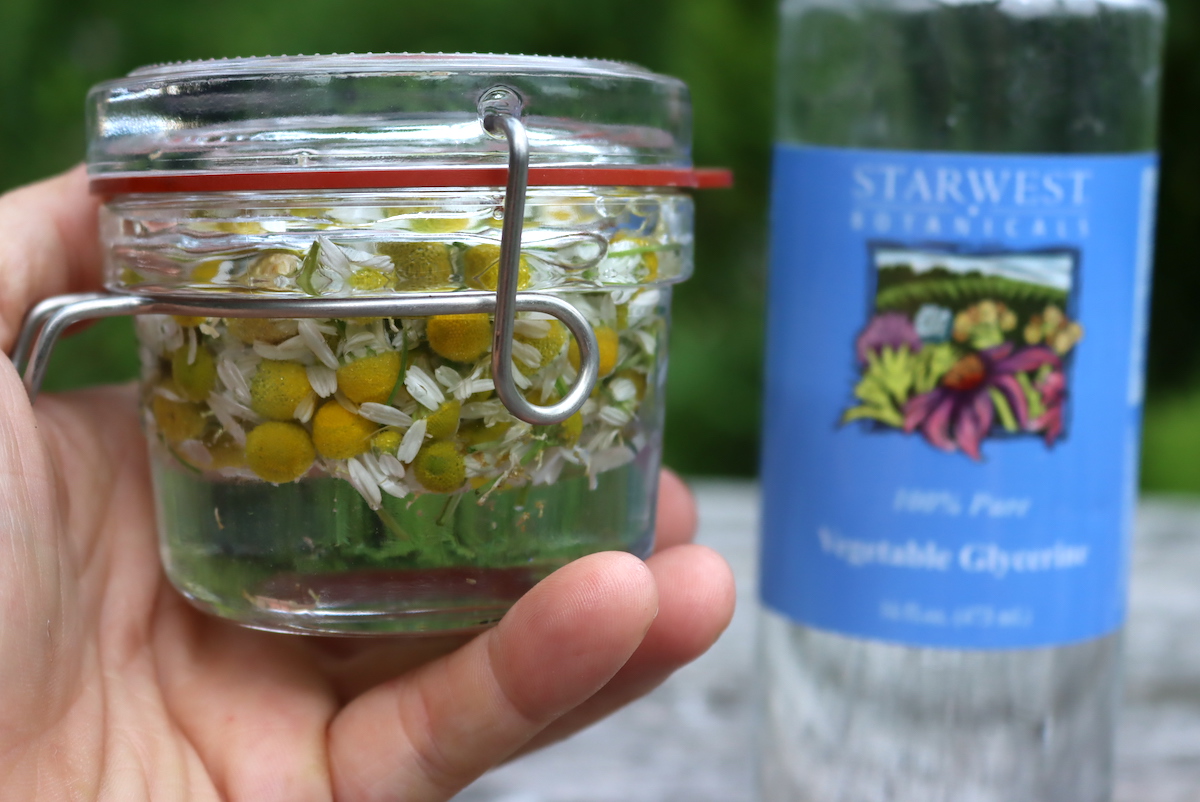
To make an herbal tincture, simply add the plant material to a jar and cover with vodka. Any clean-tasting, high-proof alcohol will work for making tinctures. I tend to use Smirnoff because it’s cost-effective and doesn’t have an unpleasant lingering taste. Apply the lid and then place the herb/vodka mixture in a cool, dry place away from direct light.
Give the jar a shake every couple of days (you don’t have to be strict about a set time) and let the ingredients steep for 6 to 8 weeks. Pour the tincture through a fine mesh strainer lined with a cheesecloth to remove all of the plant material and then decant into a bottle with a dropper using a funnel. Always use amber glass bottles for storing tinctures.
For more detailed information about this process, check out my comprehensive guide to making herbal tinctures at home.
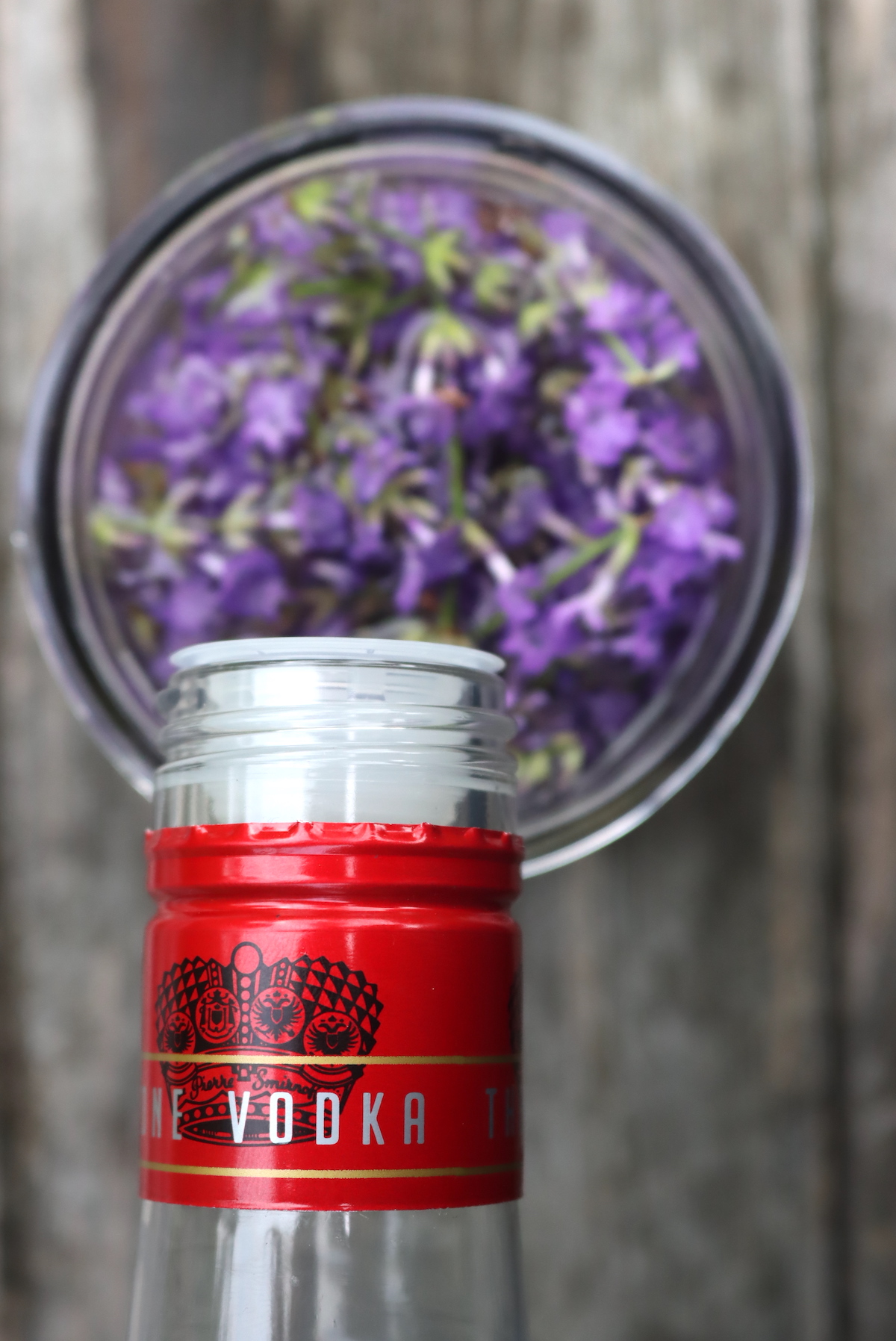
Herbal Tincture Recipes
For this roundup, I’ve included tincture recipes for both internal and external health issues. In most cases, I’ve provided a resource for ordering quality dried plant material if fresh isn’t available (for some herb varieties, such as St. John’s wort, an effective tincture can only be made with freshly picked flowers).
Astragalus Tincture
Astragalus is an adaptogenic herb that is taken to help the body respond to and adapt to stress. When made into a tincture, astragalus root helps support immune function, increases energy levels, and could potentially improve cardiovascular health because of its rich flavonoid content.
You can grow astragalus in your garden as long as you have a warm growing season where the plant can be kept outdoors. If you grow astragalus in a container and you have cold winters, simply move the pot indoors to a sunny location over the winter. For most people, ordering Astragalus root online is the best way to get it, but you can also get ready-made Astragalus extract.

Bee Balm Tincture
A favorite tincture when cold and flu season rolls around, bee balm forms the base of this multi-purpose herbal remedy. Bee balm contains a surplus of thymol, a plant compound that has antiseptic properties, hence its common usage as a remedy against sniffles and sore throats.
Because of its antimicrobial properties, bee balm has historically been used to treat diarrhea, nausea, sore throat, and fever. This tincture is also effective at relieving menstrual cramps and relieving anxiety in children and adults.
Bee balm can be cultivated or it can be found growing in the wild in many parts of the United States. There are many different varieties of bee balm to choose from with the most common wild variety being pink bee balm.
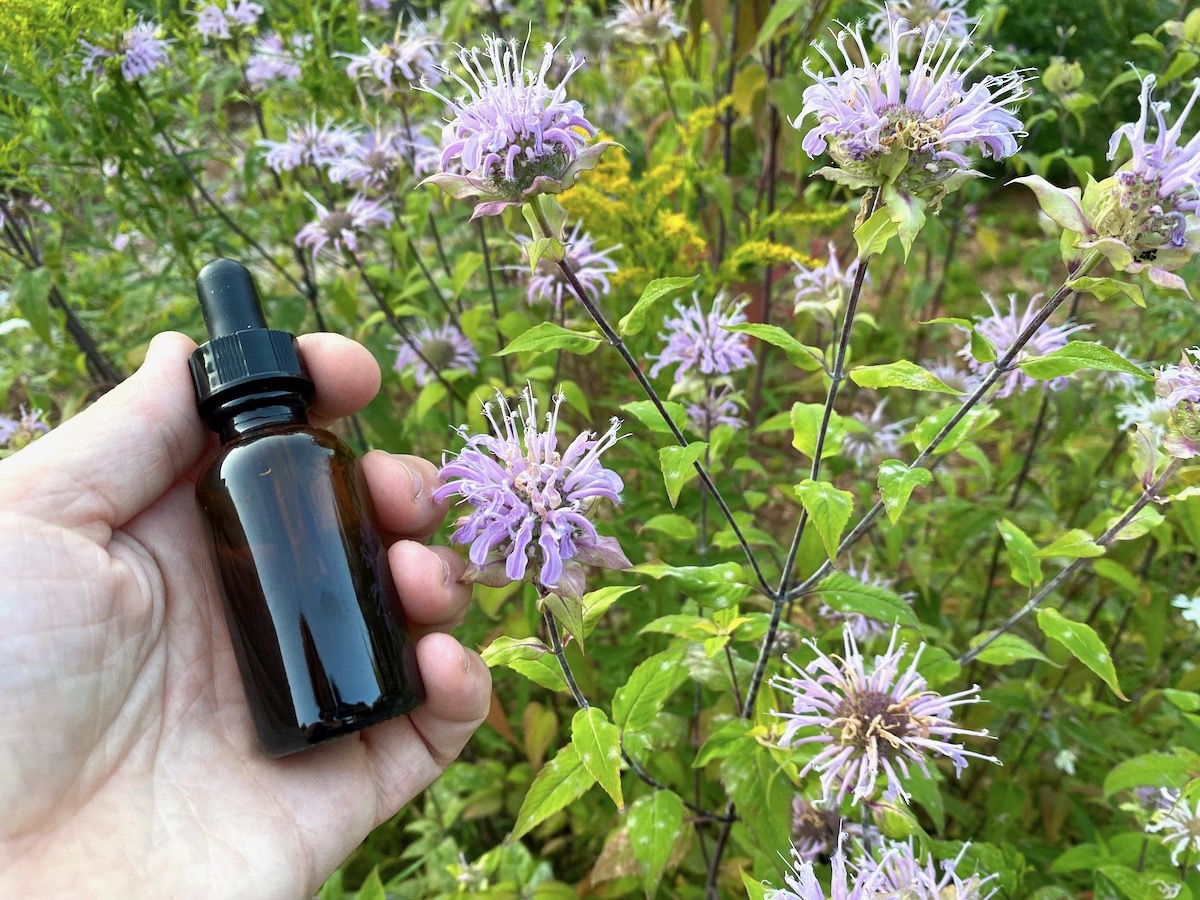
Black Walnut Tincture
This somewhat unusual tincture uses the outer husk of black walnuts as a source for its medicinal benefits. Black walnut is one of the only land-based sources of iodine, a nutrient that is typically found in dairy, eggs, and seaweed.
Black walnut tincture has natural anti-parasitic properties and is taken to help treat intestinal parasites in both humans and animals.
If you live in the Eastern United States then you might already be familiar with the black walnut trees indigenous to your area. The walnuts drop from the trees in early fall, giving you ample opportunity to collect enough to make a tincture. Alternatively, you can order black walnut powder online, and pre-made black walnut extract is available as well.
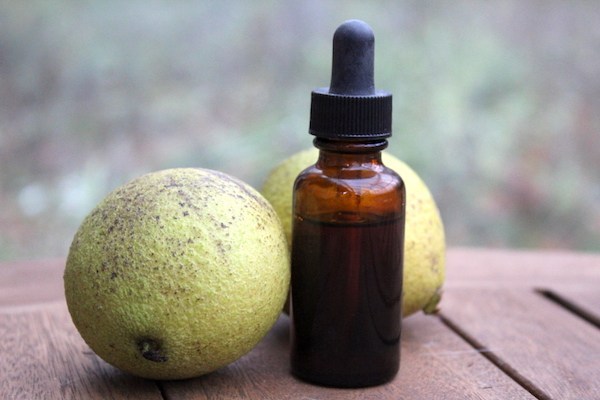
Burdock Tincture
Burdock tincture is made from the root of the burdock plant and has a long history of use as an herbal remedy. This tincture has potent anti-inflammatory properties and I can personally attest to its ability to shrink flu-related swollen lymph nodes in record time.
Like dandelions, burdock root is a diuretic and it has traditionally been used to cleanse the liver and kidneys. In Chinese medicine, burdock is often combined with other herbs to treat sore throats and other cold symptoms.
I grow my own burdock and harvest the roots in the fall, using only first-year roots for any projects related to herbalism. By the time the second year rolls around, the roots will have used all of their available nutrients to form seeds.
If you cant find burdock root in the wild, it’s dried burdock root is available online for herbal tincture making. (You can also purchase pre-made burdock extract.)
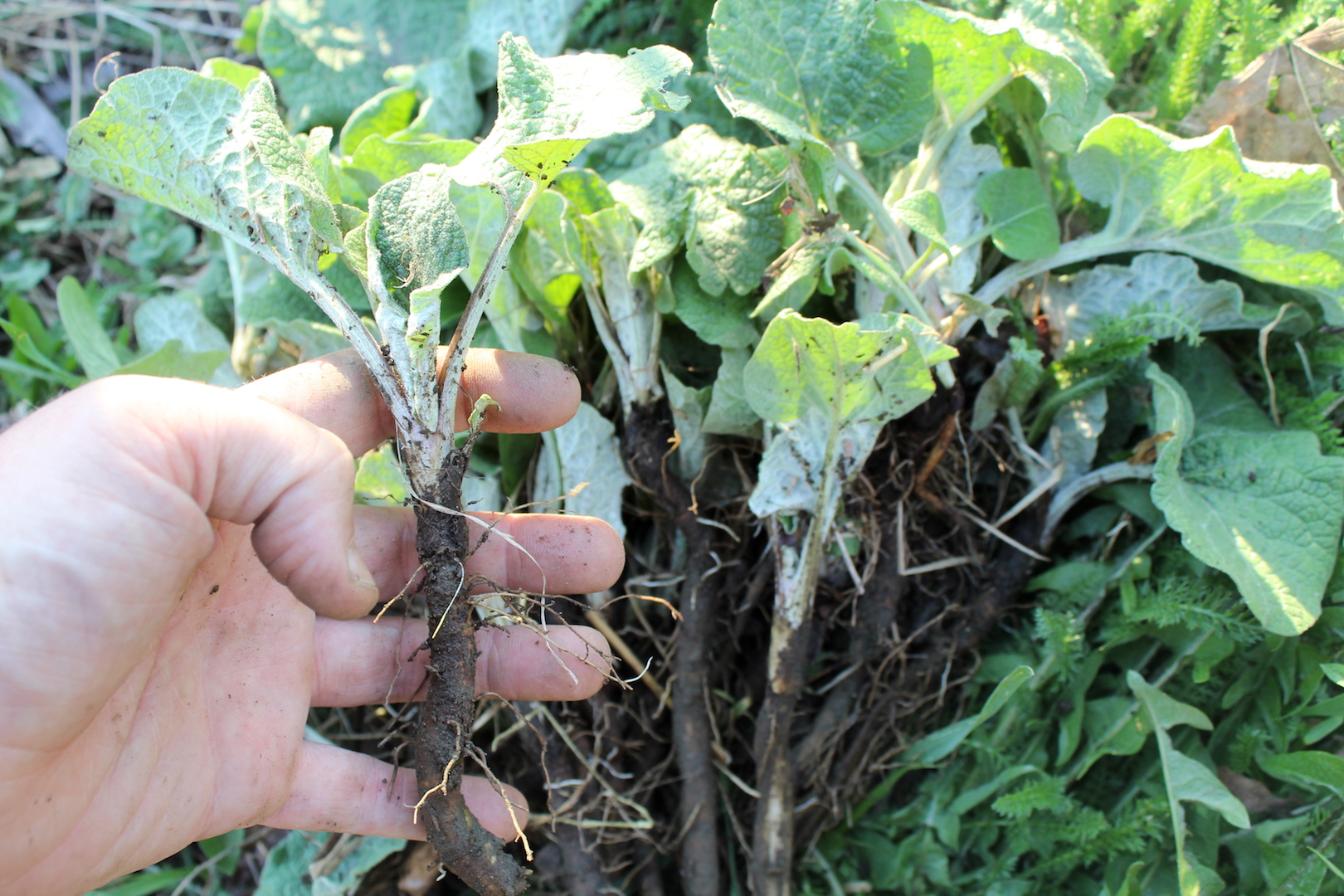
Chamomile Tincture
This recipe uses chamomile flowers (you can either fresh or dried) to make a tincture with anti-inflammatory and antimicrobial properties. Clinical studies have found that chamomile extract reduces oral inflammation and can potentially alleviate pain associated with ulcers.
Chamomile extract is not only beneficial for menstrual cramps, one study found that it also reduced feelings of low mood and depression that can be present during your period. Of course, chamomile is probably best known for its mildly sedating effects as a natural sleep aid and a relaxant.
Pre-made chamomile extract is available, as are dried chamomile flowers for tincture making.
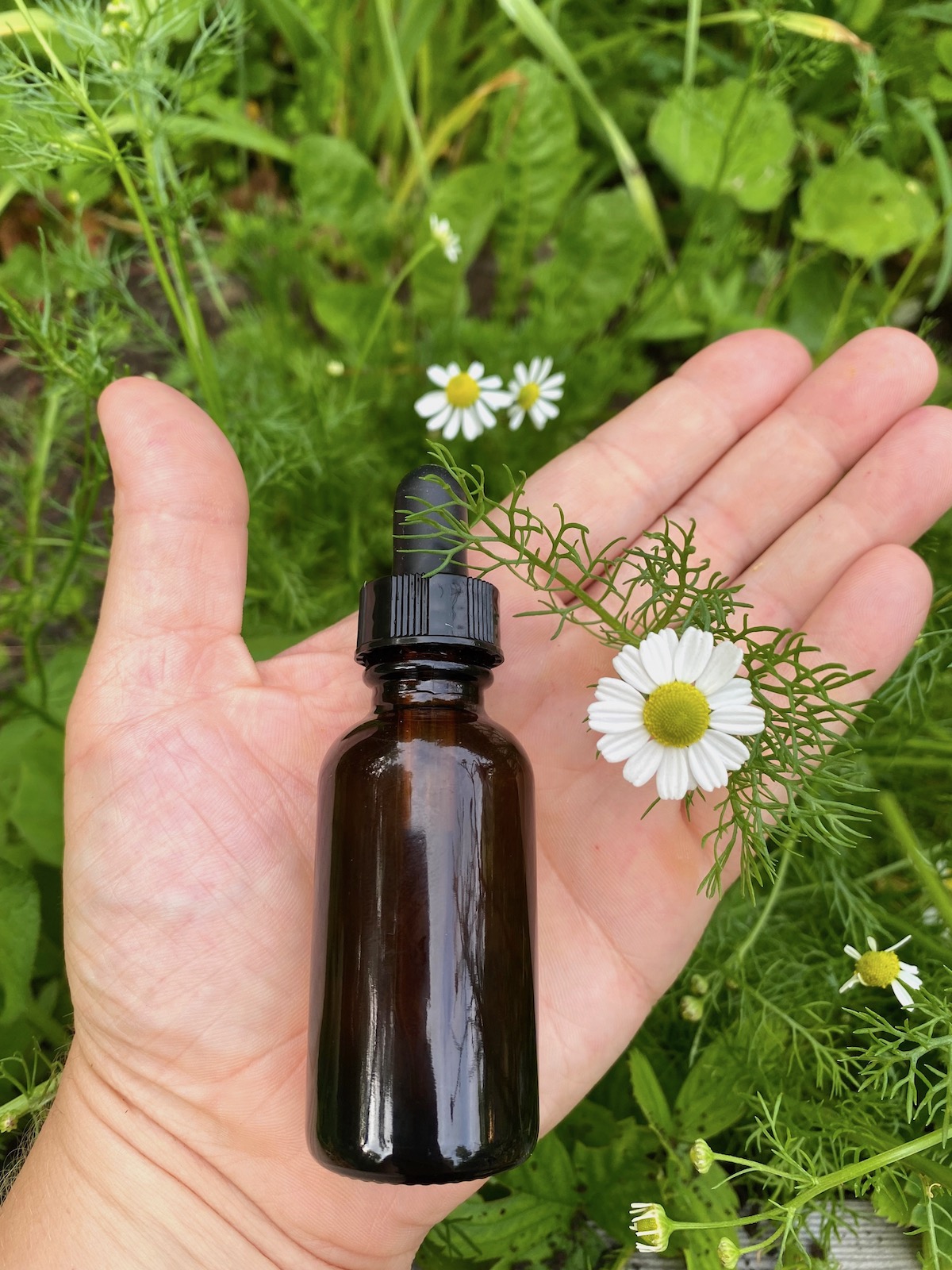
Chickweed Tincture
A tincture that has been made with chickweed will have strong anti-bacterial properties, making this formulation a go-to for breakouts thanks to the wound-healing properties of the actual plant matter and the astringency of the alcohol that makes up the base.
The anti-inflammatory properties of chickweed can also be applied to digestive health, especially when taken for its gentle laxative effects and for its ability to calm an upset stomach.
You can find wild chickweed that’s ready to be harvested in mid-spring across many areas of the United States, or you can order dried chickweed leaves if you can’t find it in the wild, and pre-made chickweed extract is available as well.
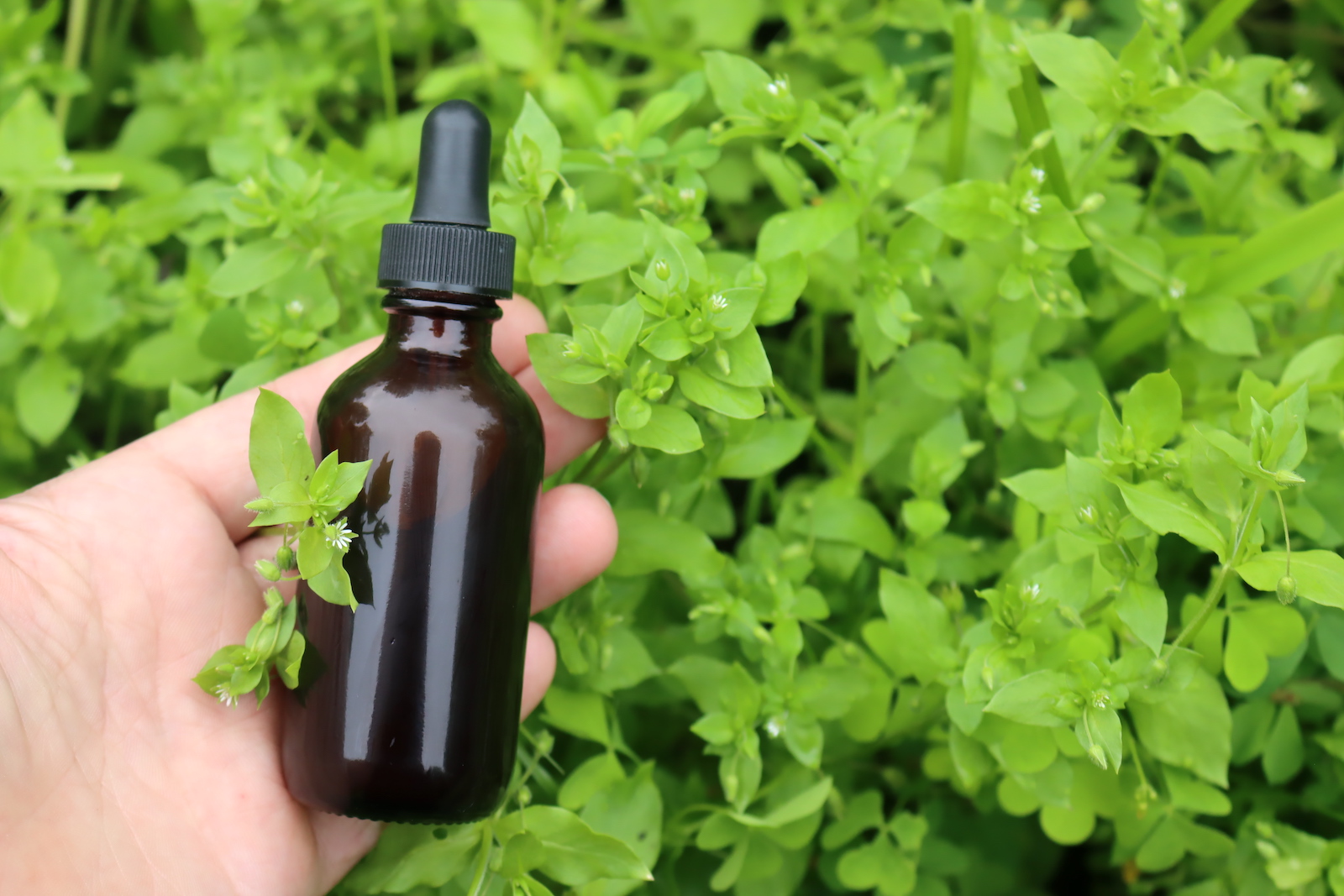
Dandelion Tincture
From root to petal, the entire dandelion plant can be used to make this tincture recipe. Perhaps best known for its ability to soothe an upset digestive system, a few drops of dandelion tincture before a meal will effectively help prevent gas and heartburn.
Dandelion plant material supports healthy liver and kidney function. This tincture is also a mild diuretic that can be taken as part of a treatment for UTIs and water retention.
In addition to these substantial benefits, dandelion tincture is also taken for such wide-ranging ailments as constipation, arthritis, hangovers, chronic illness, and blemished skin.
To make this recipe for dandelion tincture, you can use any fresh, unsprayed plant material that you can get your hands on, or you can order dried dandelion leaf or dried dandelion root, or pre-made dandelion extract.

Echinacea Tincture
Recognized in many circles for its ability to bolster healthy immune response, echinacea has been widely studied for its effects on the common cold and other respiratory illnesses. In fact, one study found that regularly supplementing with echinacea reduced the chances of catching a cold by 58% and that is reduced the average duration of the illness by up to a day and a half.
Echinacea tincture can also be taken to help treat a number of infectious diseases, including herpes, malaria, syphilis, and UTIs. In the past, Native Americans took echinacea to treat everything from headaches to snakebites.
If you plan on harvesting fresh echinacea, make sure it comes from a plant that is at least three years old. Otherwise (and this is what I tend to do), you can buy dried echinacea plant material or pre-made echinacea extract.
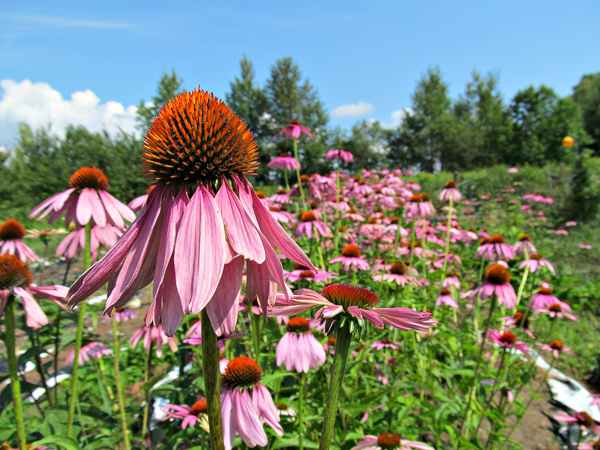
Elderberry Tincture
A popular choice when cold and flu season rolls around, elderberries have a long history of use as a form of plant medicine. Elderberries contain antiviral and immune-balancing properties and studies have even found that regularly taking elderberry tincture over the course of a flu bug can lessen the duration of the illness by up to four days.
Elderberry tincture has other medicinal uses, most notably as a remedy for stomachaches and as a decongestant. If you have access to fresh elderberries feel free to use them in this recipe, otherwise I regularly order the dried elderberries online, saving the fresh for baking. You can also order pre-made elderberry extract.
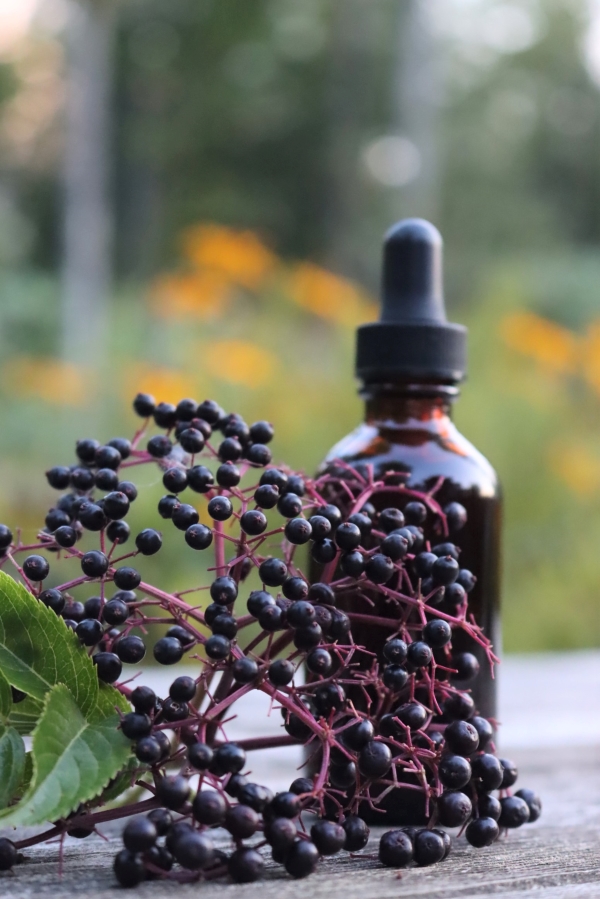
Elderflower Tincture
This tincture is made from the tiny white flowers of the elder plant and shares some of the immune-balancing benefits of the version made from elderberries above. Elderflower tincture is also an effective expectorant (which means that it helps clear phlegm from the airways) and can be taken to alleviate symptoms of the common cold, flu, in addition to those associated with sinus infections.
Elderflower tincture also acts as a gentle diuretic or laxative, making it an especially good choice for children, the elderly, and anyone with a weakened digestive system.
If you live in an area where elderflowers grow, you should be able to harvest the blossoms in June. Otherwise, you can order dried elderflower material as well as pre-made elderflower extract.
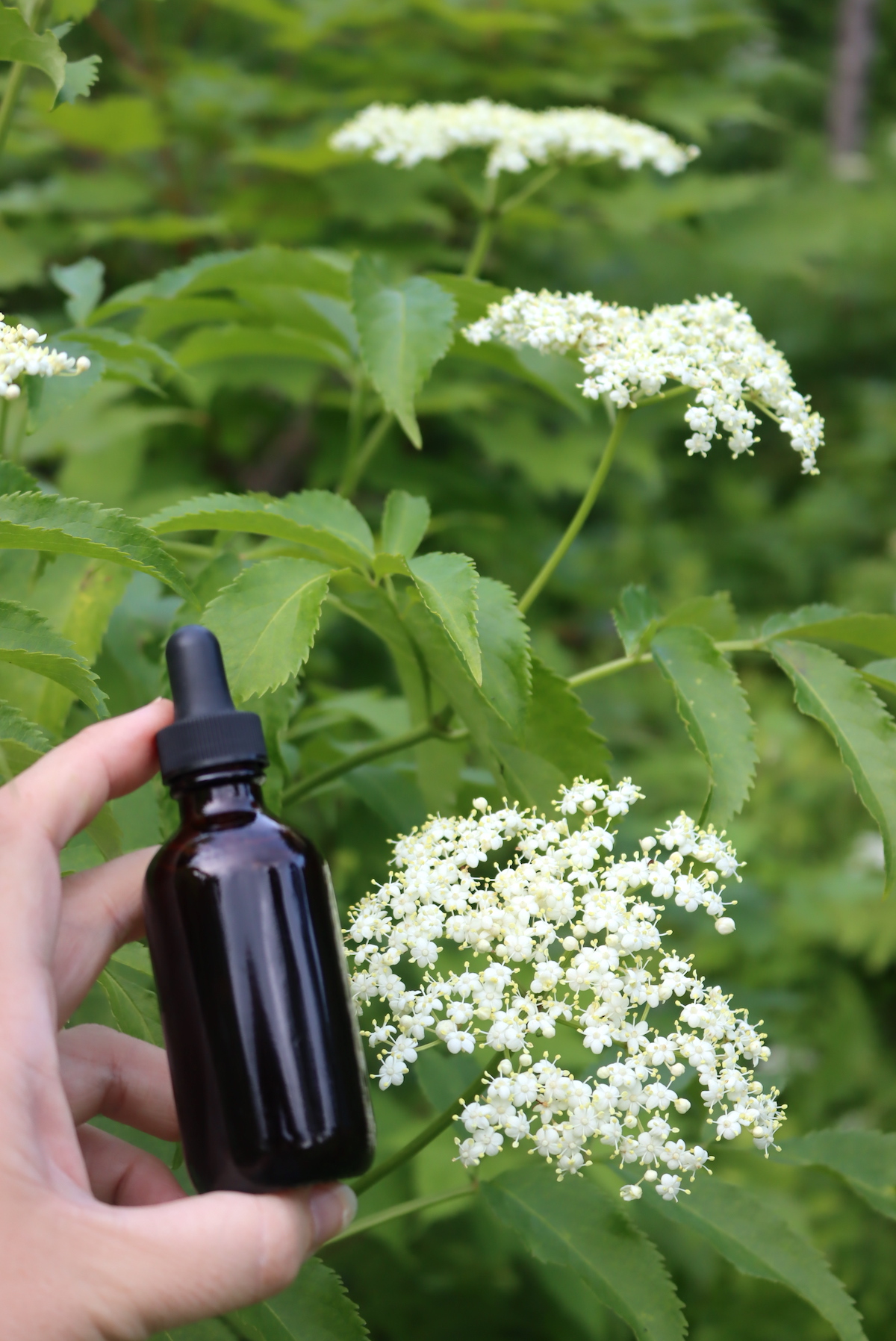
Feverfew Tincture
As the name suggests, feverfew is a medicinal herb that is taken for its ability to reduce the severity of fevers. In fact, the word feverfew is related to the Latin word febrifugia, which literally translates to “fever reducer.”
Feverfew tincture is also taken for migraine relief and for the prevention of migraines, tension headaches, and stress-induced headaches. A proven anti-inflammatory, feverfew has an excellent track record for relieving pain associated with arthritis and other autoimmune disorders.
Feverfew is easy to grow from seed and will even thrive in container gardens—the plants will just need a good thinning out on a fairly regular basis. If I need dried feverfew for tincture-making I almost always order dried feverfew online, as I can’t seem to get it to grow in my northern garden. You can also order pre-made feverfew extract.
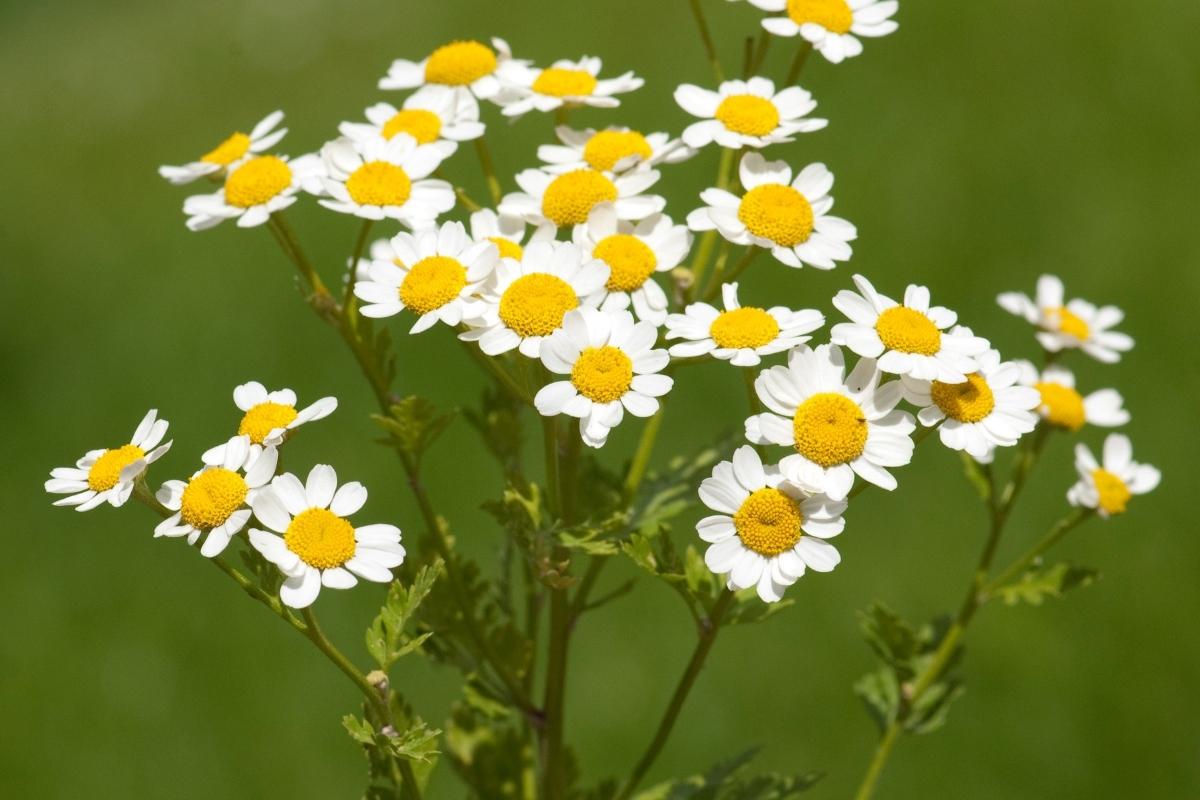
Ginger Tincture
The anti-nauseant effects of ginger are well-documented and have been proven in several research studies. Not just limited to nausea, a ginger tincture can be beneficial for all sorts of stomach ailments including gas, bloating, and discomfort from overeating.
This recipe, which also includes instructions for making an alcohol-free herbal glycerite, can be made using dried or fresh ginger. If you’re buying ginger from the store spring for the organic version if you can find it, and give the roots a thorough scrub before submerging them in the alcohol.
We grow our own fresh ginger at home, and that’s what I tend to use.
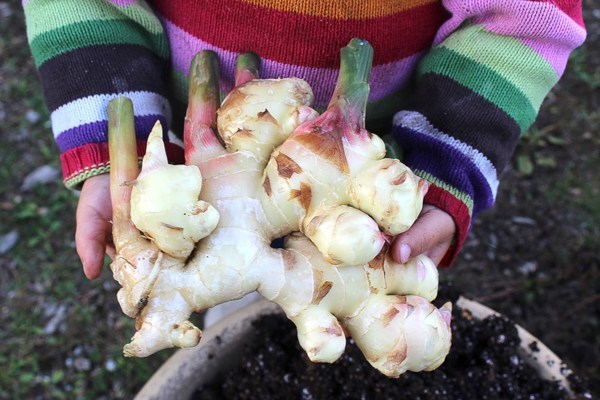
Holy Basil Tincture
Holy Basil, also commonly referred to as tulsi, is an adaptogenic herb with anti-inflammatory properties. In tincture form, Holy Basil is most often taken for its ability to decrease pain, swelling, and other physical symptoms associated with stress and inflammation.
Holy basil can be grown from seed in an outdoor garden or in a container, and it’s easy to grow tulsi at home.
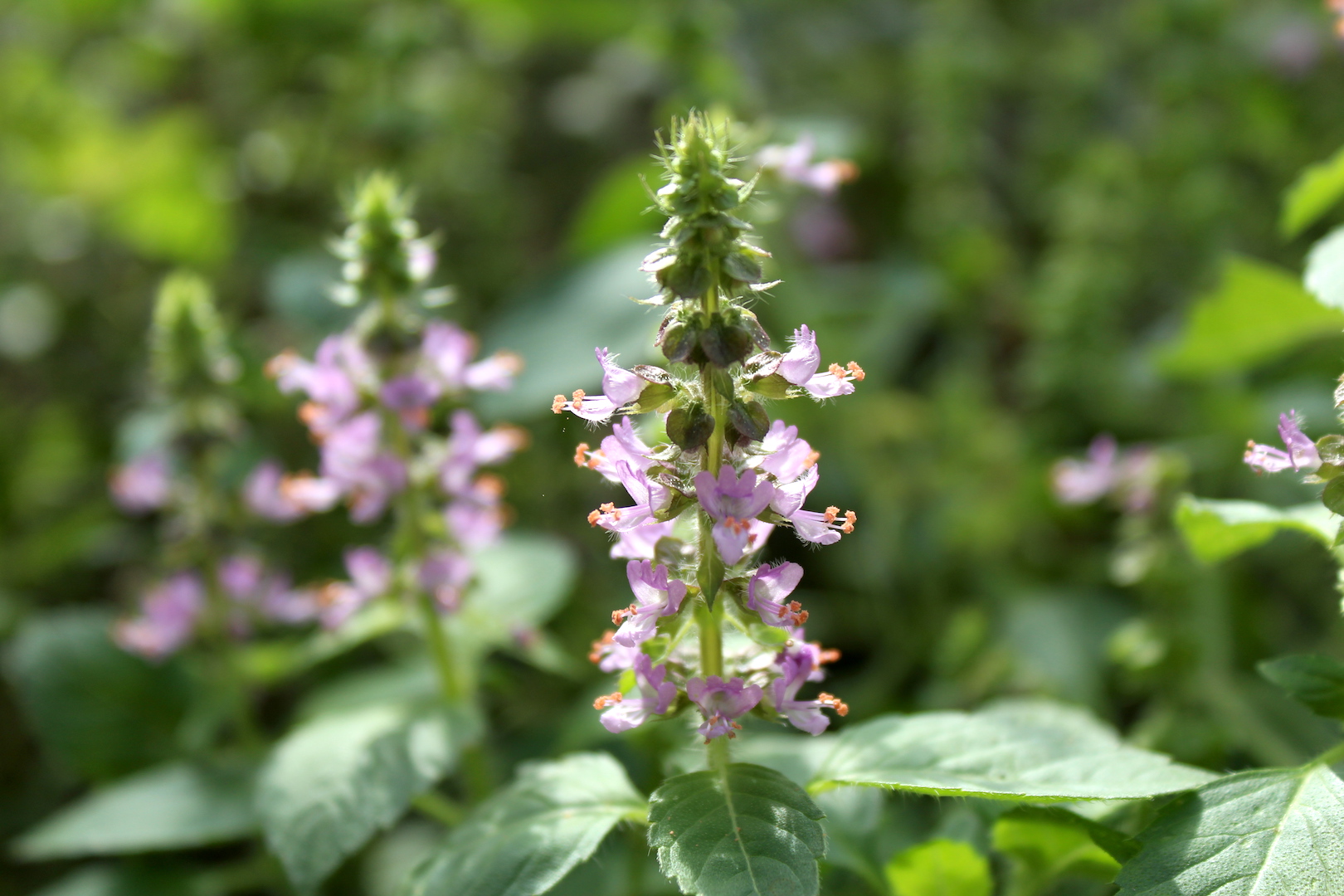
Lavender Tincture
A few drops of lavender tincture at bedtime make a world of difference when I’ve had trouble sleeping the previous night or if I feel overtired. The same goes for days when I’m experiencing unexpected anxiety or even symptoms of mild depression. Lavender has become so synonymous with its calming effects that the smell of it alone is enough to have an impact on me, so a concentrated tincture just makes it that much more effective.
A lavender tincture can also be taken to help prevent head pain associated with migraine or tension as well as relieve symptoms of menopause-induced hormonal changes.
If you’re lucky enough to have fresh lavender close by then by all means, use it for this tincture recipe (just make sure it hasn’t been sprayed—don’t buy lavender from a florist for this reason). Best-quality dried lavender flowers are easy to sourced from online herbal shops, but for some reason, lavender tincture is hard to come by. If you want it, you’ll have to make it yourself!
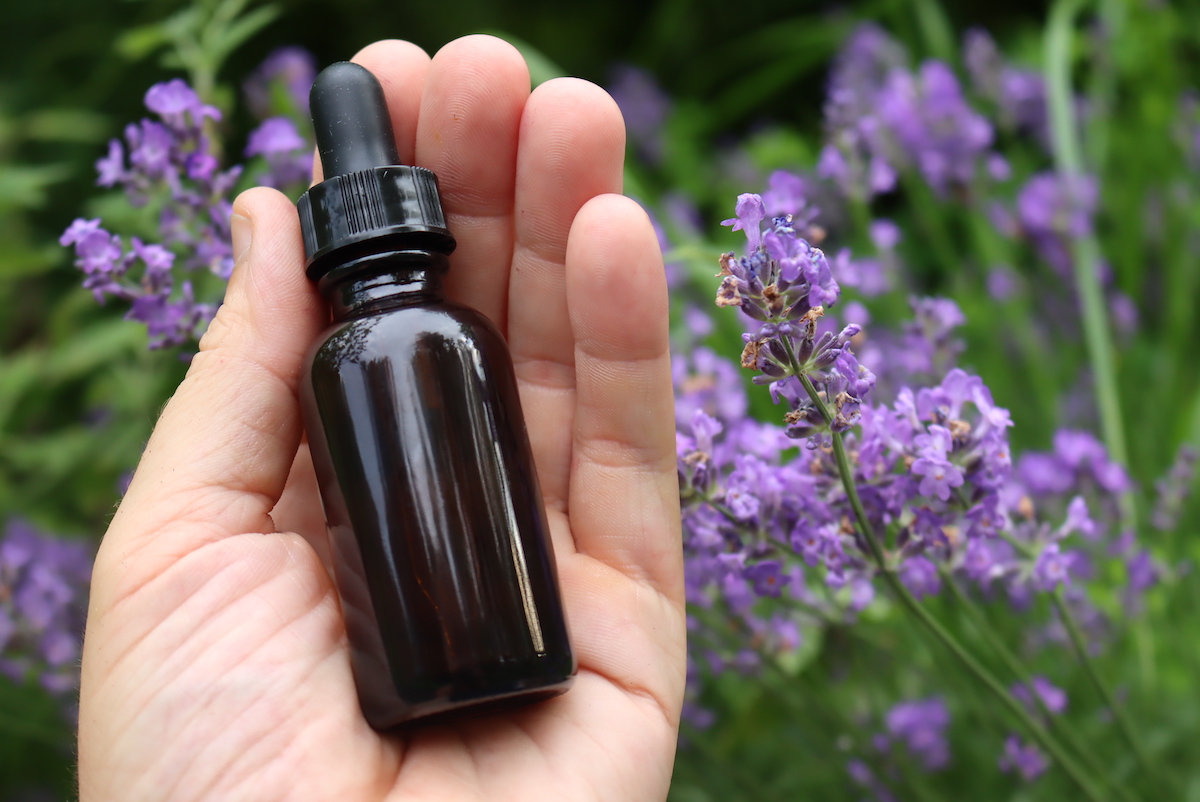
Nasturtium Tincture
Made from the beautiful bright orange and yellow nasturtium blossoms, this peppery tincture is packed with immune-restoring vitamin C. Nasturtiums also have natural antibacterial properties and this tincture has proven itself useful over several cold and flu seasons.
In addition to being a rich source of antioxidants in the form of vitamin C, nasturtium tincture can be used to help treat symptoms of bronchitis and acute sinusitis. Limonene, a volatile oil that is naturally found in nasturtiums, is a powerful antimicrobial agent and is thought to be responsible for the plant’s bacteria-fighting capabilities.
You’ll need fresh, unsprayed nasturtium flowers to make this tincture so check with friends and neighbors if you don’t already have some of these prolific, easy-to-grow plants already thriving in your own backyard.
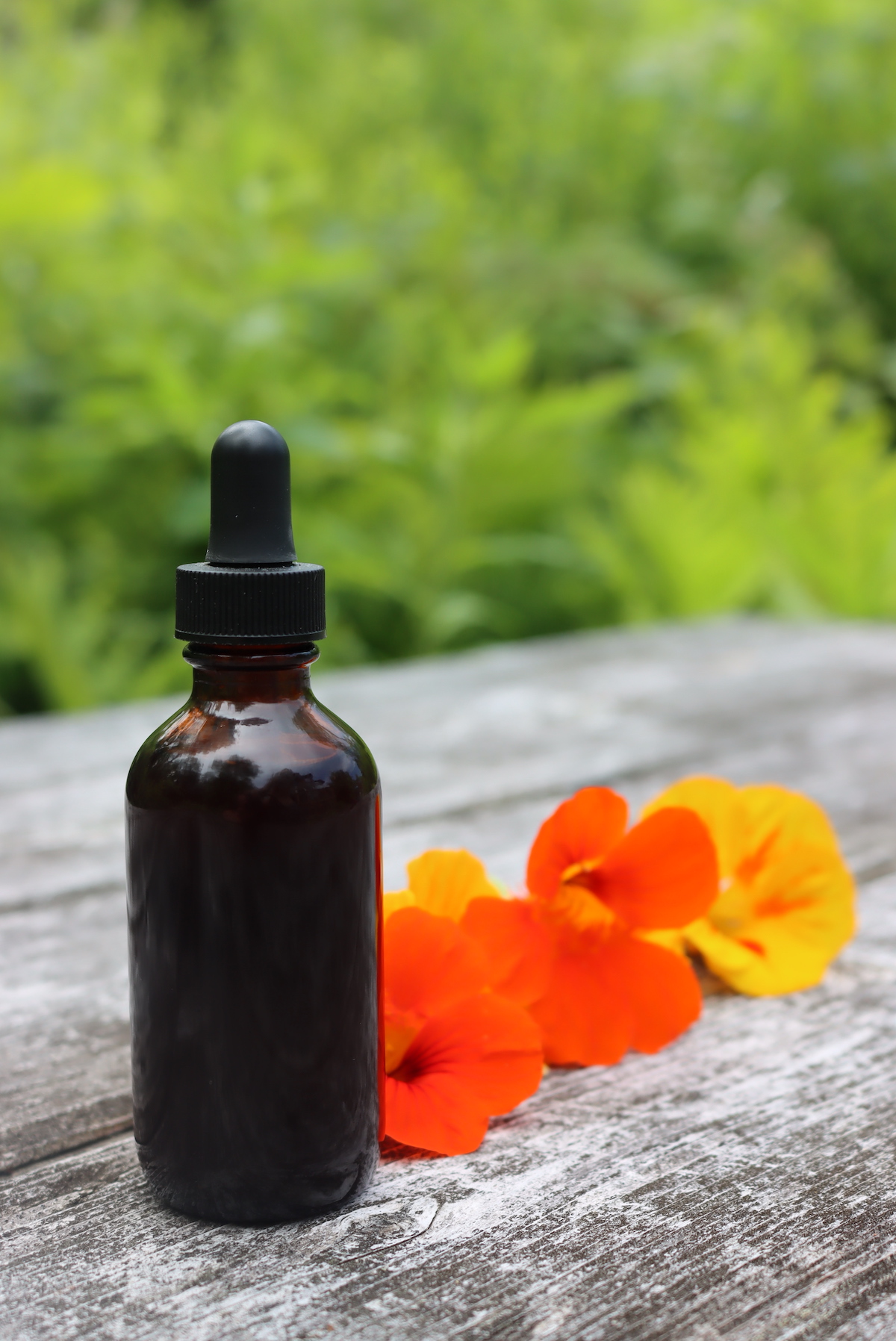
Oregano Tincture
Thanks to the natural antibacterial properties found in oregano, this oregano tincture can also be applied externally to cuts, scratches, and other minor wounds to speed up the healing process.
Oregano has a well-deserved reputation for having antibacterial properties that is backed up by scientific research. Studies have found that oregano extract has antibacterial, antioxidant, and antimicrobial properties that can suppress the growth of certain resistant pathogens.
Oregano tincture can also be taken internally to ease symptoms of stomach distress, such as excessive gas and diarrhea, or respiratory illness, such as bronchitis or a persistent, dry cough.
Oregano tincture can also be used to treat different types of fungal growth, particularly thrush, athlete’s foot, nail infections, and yeast infections. Unlike some fungal treatments, these growths don’t build up a tolerance to oregano over time, making them a better choice for long term management of the condition.
Oregano extract can be used to maintain oral health and prevent periodontal disease. To make a simple but effective antibacterial mouthwash, whisk a few drops of oregano tincture into a cup of warm water with a pinch of salt.
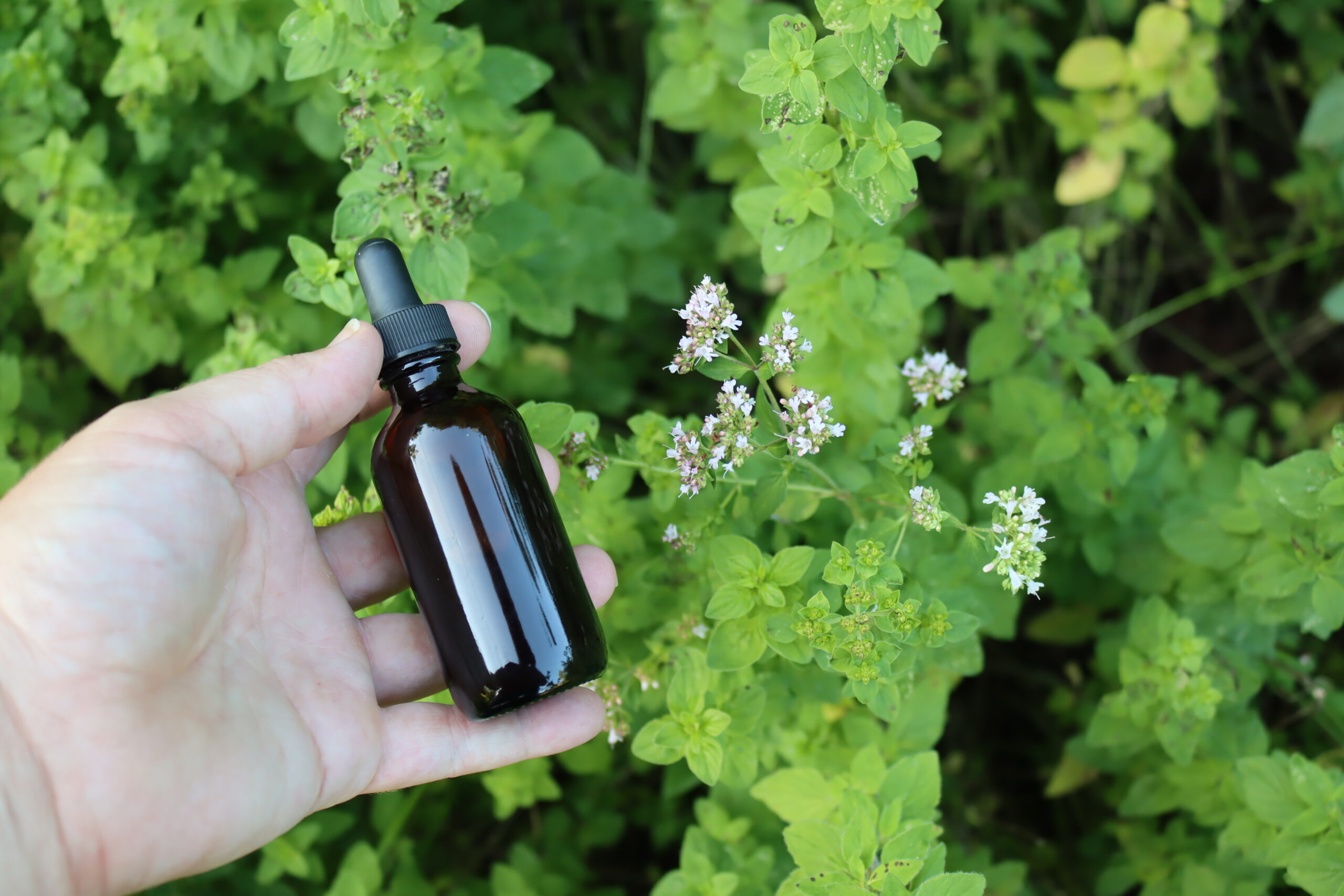
Peppermint Tincture
The recipe found below yields an extract that doubles as a medicinal tincture and a peppermint extract that can be used for culinary purposes. Long used to treat symptoms associated with stomach pain such as gas, constipation, and diarrhea, peppermint tincture can also be used to relieve colic, indigestion, and travel sickness.
Peppermint tincture can also be used as an expectorant and a decongestant which makes it a good remedy against common cold symptoms such as coughing and sore throat. This tincture can also be added to warm or hot water and sipped to clear the throat and the sinuses (for maximum effectiveness, add it to a mug of hot peppermint tea).
This recipe calls for either fresh or dried peppermint; the instructions also explain how to make a double-infused, extra-strength tincture using both leaf forms.
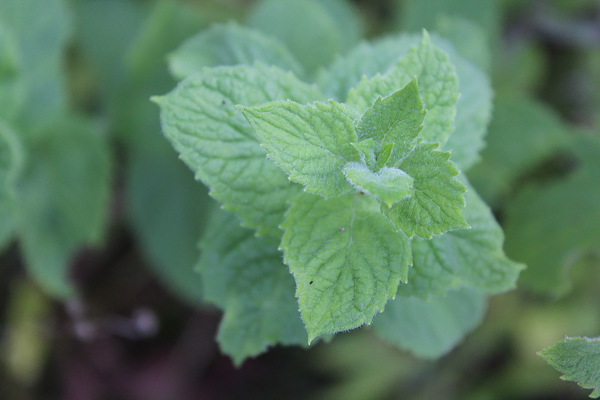
Red Clover Tincture
Red clover is used to prevent and treat symptoms associated with menstruation and menopause, including hot flashes and cramping. With its reputation as an all-around hormone balancer, red clover also helps promote skin health and improve sleep. Red clover is also being studied for its effects on the treatment of osteoporosis, another health condition that is related to changing estrogen levels.
This recipe calls for freshly picked red clover blossoms, which can be found growing wild in many parts of the United States. As always, and especially when foraging near roadways, make sure any clover that will be ingested hasn’t been sprayed with chemicals.
Dried red clover flowers are available from herbal shops, as is pre-made red clover extract.
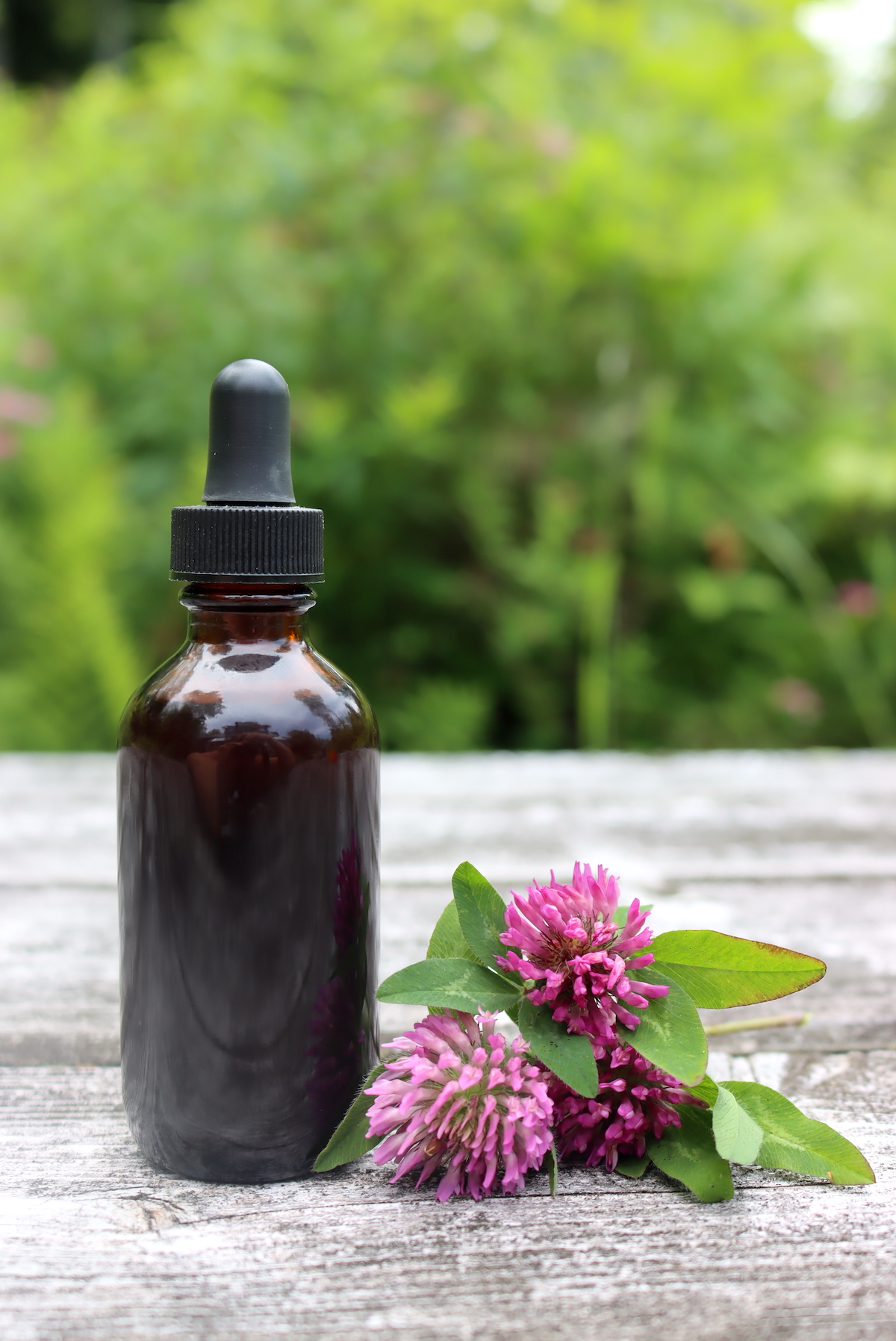
St. Johns Wort Tincture
St. John’s wort is commonly used to alleviate symptoms of mild depression thanks to its mood-boosting properties. It’s also taken to relieve both physical and psychosomatic symptoms associated menstruation and menopause as well as to improve sexual function that has been adversely effected by hormonal changes.
Although undoubtedly effective, St. John’s wort has serious contraindications with several types of commonly prescribed drugs including SSRIs, oral contraceptives, HIV medications, and statins, so be sure to double-check with your healthcare provider before taking this tincture.
One of the few recipes on this list that must be made with freshly picked flowers, St. John’s wort will rapidly lose its potentness after it’s been picked. Don’t waste your money buying dried St. John’s wort, it just won’t have the same effectiveness. You can, however, buy pre-made St. John wort Extract made with fresh flowers.
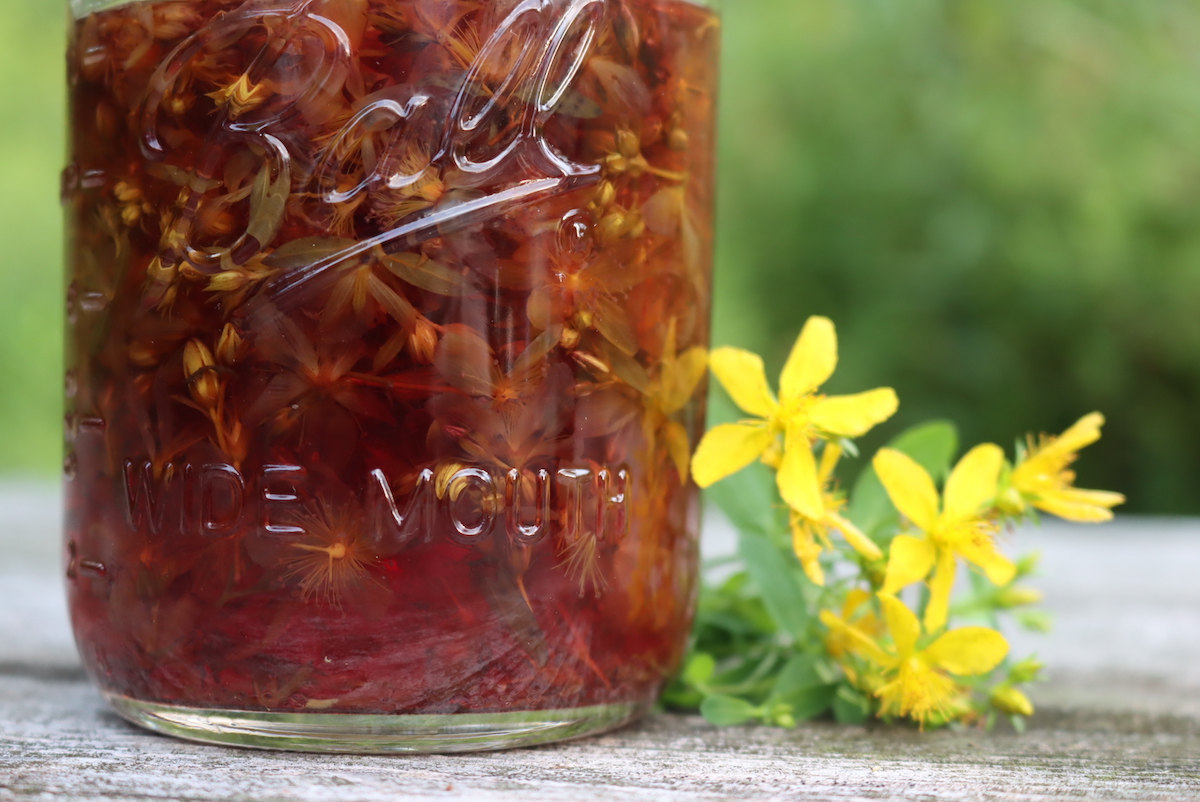
Stinging Nettle Tincture
A powerful medicinal plant that has been unfairly relegated to weed status, stinging nettle lends its surprisingly potent anti-inflammatory properties to this tincture recipe. Stinging nettle tincture is not only an excellent source of nutrients (vitamins A, C, D, and K as well as iron and calcium), it can also be taken to help ease muscle cramps, combat allergies, fight anemia, and to relieve itchy skin conditions such as eczema.
If you want to find stinging nettles outdoors, look for them in a wild area versus close to a road or other heavily trafficked area. If you don’t have a source for wild stinging nettles you can buy dried stinging nettle plant material online (you can also use it to make a soothing nettle tea, as well as this tincture recipe). Pre-made nettle extract is also available.
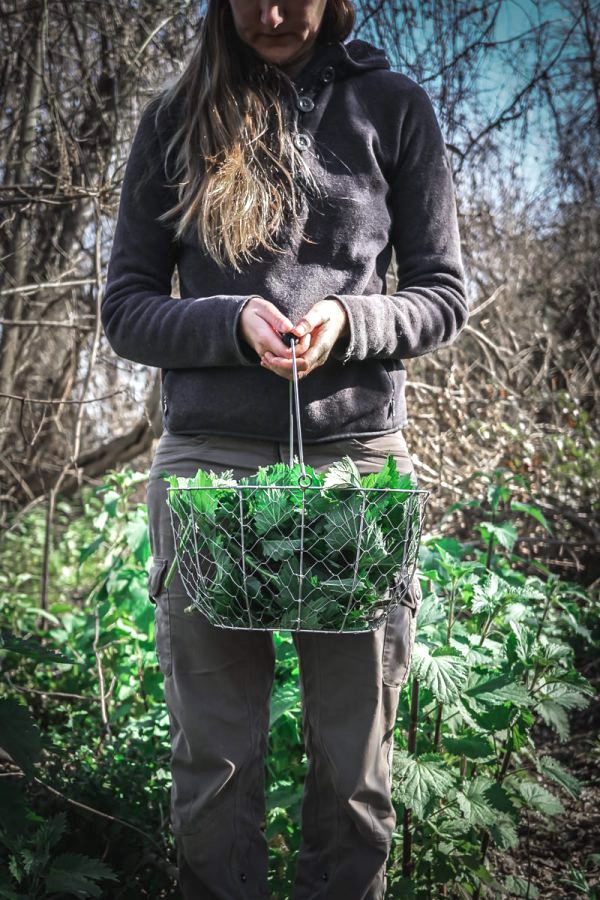
Valerian Root Tincture
Another relaxing tincture you can add to your herbal medicine cabinet, the mildly sedating effects of valerian root extract make it the perfect gentle remedy for sleepless nights. Safe for both children and adults alike, valerian root is also thought to reduce anxiety and symptoms of hyperactivity.
Tincture made from valerian root works on the nervous system to relieve pain—one study found that it even increased the effectiveness or aspirin. Because of its antispasmodic properties, valerian root tincture is taken to prevent and soothe menstrual cramps.
Dried valerian root is readily available for purchase, and it’s rather convenient as fresh valerian roots are very difficult to clean. Pre-made valerian extract is available too, if you want to skip a step. If you have valerian growing in your garden, mature roots can be harvested from a growing plant (either use fresh or dry them before making the tincture), and you can also forage valerian roots in the wild.
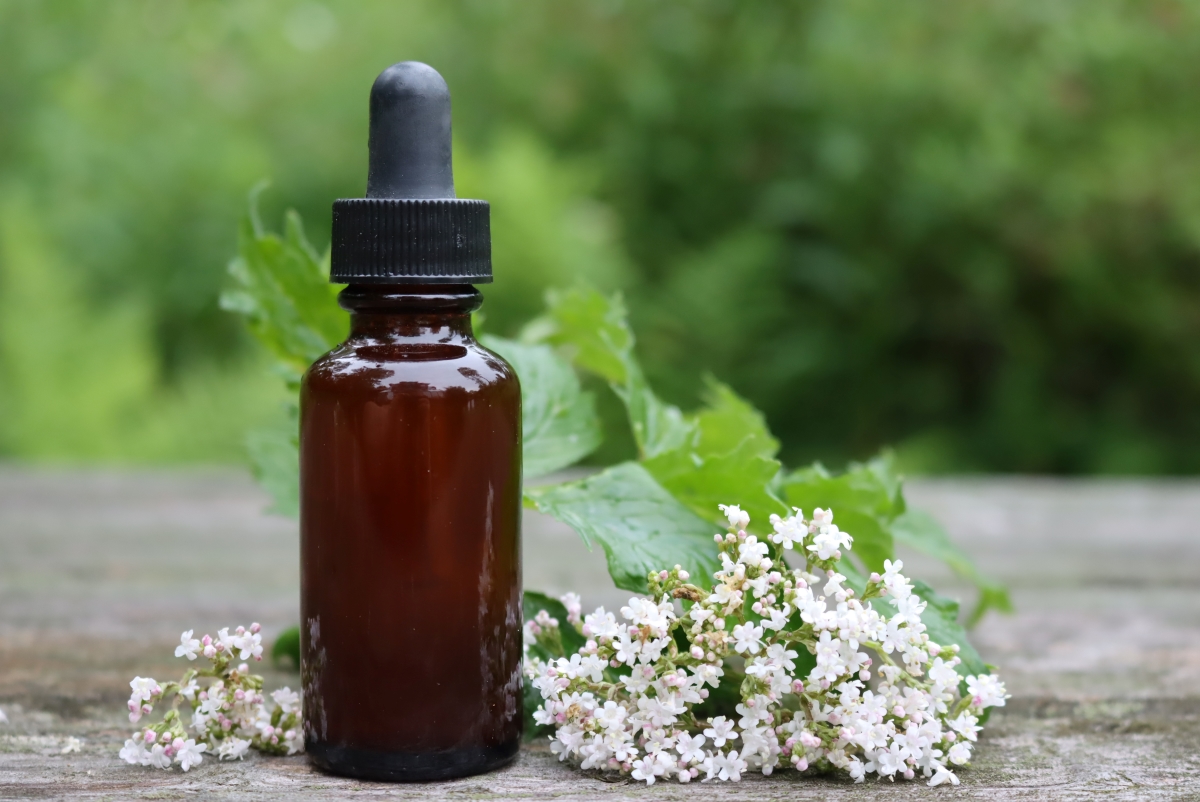
Yarrow Tincture
Yarrow tincture can be used externally for all manner of wounds, bug bites, and rashes. Not only is it a natural styptic (meaning, an astringent compound that stops bleeding in its tracks), it also helps prevent bruising and acts as an analgesic.
When taken internally, yarrow tincture encourages bile and saliva production and soothes gut inflammation. It also relieves menstrual cramps and hormone-induced digestive distress as well as heartburn. I also like to keep it on hand during cold and flu season for its decongestant properties.
You’ll need fresh yarrow leaves and flowers to make this tincture recipe and I’ve included plenty of guidelines for identifying and harvesting this wild plant in the instructions. If you don’t live in an area where yarrow grows plentifully, you can order dried yarrow leaves, or pre-made yarrow extract.
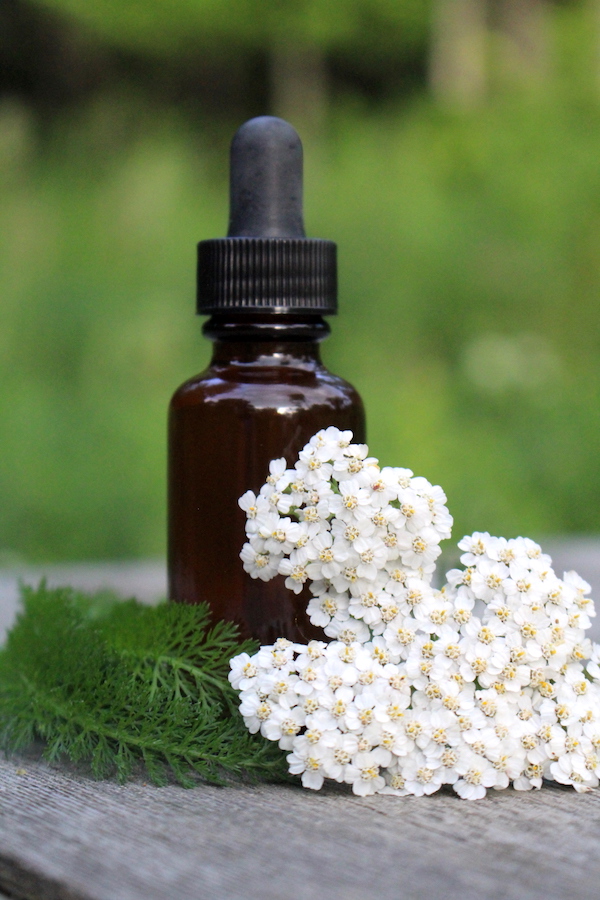
Herbal Medicine-Making Tutorials
Looking for more herbal medicine-making tutorials?
- How to Make Herbal Tinctures
- How to Make Herbal Salves
- How to Make a Herbal Oxymel
- Homemade Herbal Shampoo
Herbal Guides
These herbal guides will keep your holistic medicine cabinet well-stocked!
- 100+ Medicinal Plants (and How to Use Them)
- 20+ Immune Boosting Herbs
- 20+ Herbal Preparations for Herbal Medicine Making
- 18+ Herbal Remedies Anyone Can Make at Home
- 16+ Medicinal Trees for Your Herbal Medicine Chest

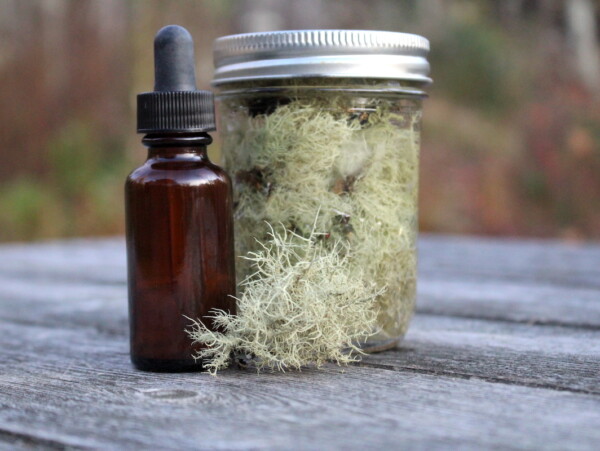
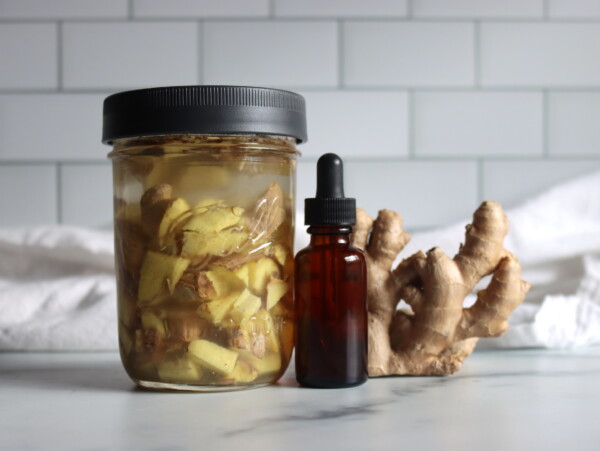
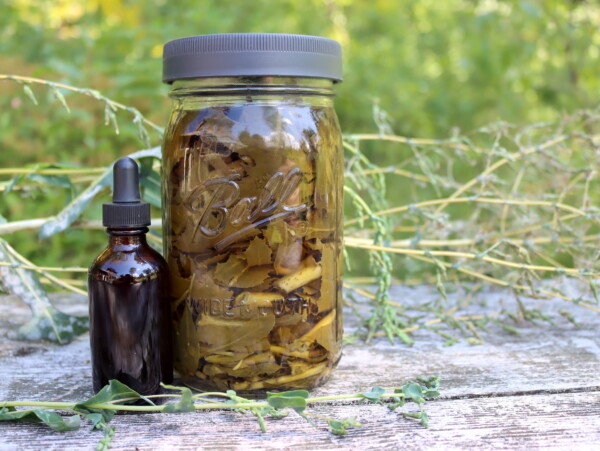
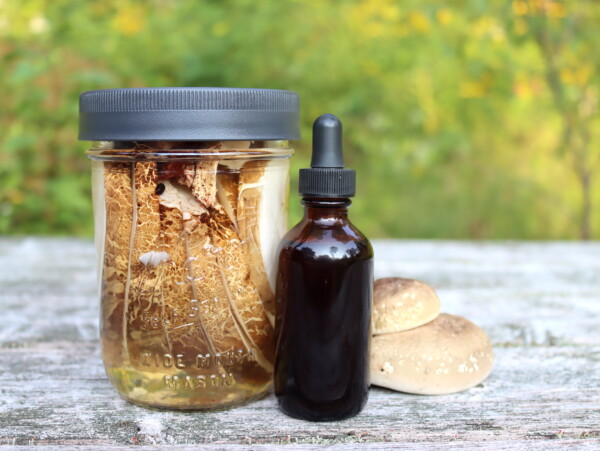
just want to say thank you for shearing your knowledge i spend hr;s just reading everything you have written. an soaking it all in..i have tryed a few of them an just love my turn out. thank you again so much.
You’re very welcome. We’re so glad that you’re enjoying it!
I am so grateful to have found this! Do you have any herbal remedies to help with hair growth and itchy skin scalp? Herbal remedies that aid in pain reduction/relief are great as well! Also, maybe a silly question, but are extracts turned into a powder and placed in capsule form? (I’m look for Boswellia, and the specific condition it’s to treat says Boswellia Extract. However, a Google search gives me Boswellia capsules, which is not what I’m wanting, or looking for.)
Usually capsules are simply the herb powdered and put into capsules. An extract is often an alcohol or water extraction of the plant. You could easily follow the same instructions in this post and make your own extract in the form of a tincture. The main thing that you want to look at with herbs is knowing which constituents you’re looking for and what the best preparation is to maximize the benefits of those constituents. Some constituents are water soluble and others are alcohol soluble.
I’m new to this. How would one “take” a tincture? I grow a lot the plants mentioned and am very interested in getting more natural remedies in my life. 🙂
Tinctures are usually taken by the dropperful straight into the mouth or into some kind of liquid to make it a little easier to swallow.
Thank you soooo much for sharing your knowledge, comprehensive, and in depth information!
You are an amazing person.
You’re very welcome. Thank you so much for your kind words.